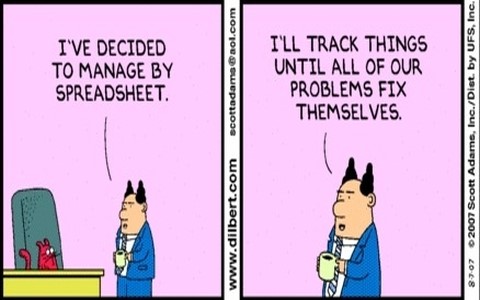Blame unrealistic technology hype and media misinterpretations for all this misunderstandings. Cloud Computing is often misunderstood by those who are outside the field - and sometimes even within the realm. Cloud related Misconceptions have arisen primarily due to the following:
- Lack of authoritative facts.
- Evolving nature of the industry.
- General flaws in human logic.
Misconception: Cloud should be used for everything
Cloud is a great fit for multiple use cases, such as highly variable or unpredictable workloads or for where self-service provisioning is key or where organizations are skeptical to upfront high infrastructure costs. However, not all applications and workloads are a fit for cloud. For example, unless clear cost savings can be realized, moving a legacy application is generally not a good use case.
The cloud may not benefit all workloads equally. Don't be afraid to propose in-house solutions when appropriate.
Misconception: The Cloud Faces More Security Risks
It's completely understandable; a new technology that processes and stores all sensitive business and customer data offsite which can be accessed remotely from anywhere; surely this benefits the hacker? Well, not actually. AWS, Microsoft, Google and other major cloud providers are hyper-focused on security and regularly perform external auditing to ensure full compliance and certification for their infrastructure.
You have to remember that the biggest risk to cloud hosting providers is a security breach, so their efforts to combat such an event are extensive. The amount of time, knowledge and investment dedicated to securing their service is likely far superior to any in-house IT equivalent. It's also worth mentioning the surprisingly high number of data breaches suffered by businesses as a result of human error or internal threats, the chances of which are hugely reduced in a cloud environment. However, IT professionals must still set policies and configure applications properly.
Misconception: My Business Is Too Small (Or Too Big) To Use Cloud Computing
Because Cloud computing is based on a concept called virtualization, it can shrink or expand as needed, without having to reconfigure physical IT setups. So if you have a business of five people that suddenly grows, a Cloud-based infrastructure can accommodate that with much less fuss than an old-school wired network of servers and computers. The Cloud is eminently customizable. No business is too small (and very few are too large) that they cannot use the Cloud. Its more of a matter of policy, strategy, and vision.
Misconception: Cloud is more secure than on-premises capabilities
In the past, cloud computing was perceived as less secure than on-premises capabilities. However, there have been very few security breaches in the public cloud, and most breaches continue to involve misconfiguration of the cloud service. Today, the majority of cloud providers invest significantly in security, realizing that their business would be at risk without doing so.
Yet this doesn't mean that security is guaranteed in the cloud. Cloud security is a shared responsibility between the provider and the consumer. CIOs should not assume that cloud providers are not secure, but should also not assume that they are. As security levels of cloud providers vary, assess your actual capabilities and your potential provider's capabilities and hold both to reasonable standards. However, IT professionals must still set policies and configure applications properly.















